Interiors can be more fun
Making spaces more delightful
There’s a UK smoothie brand called “Innocent Drinks”. Back in 2012, when I was twelve years old, a friend from school invited me and another girl to her place. After hanging out in her house, we all decided to go on an adventure to the local Nando’s. On the way, we walked past Innocent’s London HQ (which they call “Fruit Towers”). I peeked inside through the glass and was delighted to see something I had harped on about often as a kid (and heard adults laugh at)—indoor fake grass flooring.
Finally, someone shared my idea of what a cool room would look like! The interesting thing about Fruit Towers, especially in retrospect, is that it’s not expensive-looking. The building itself is not impressive, the furniture is probably pretty cheap (compared to the kind seen in fancy modern central London offices), and it’s unlikely that Innocent had to order any custom-made items to achieve their look.
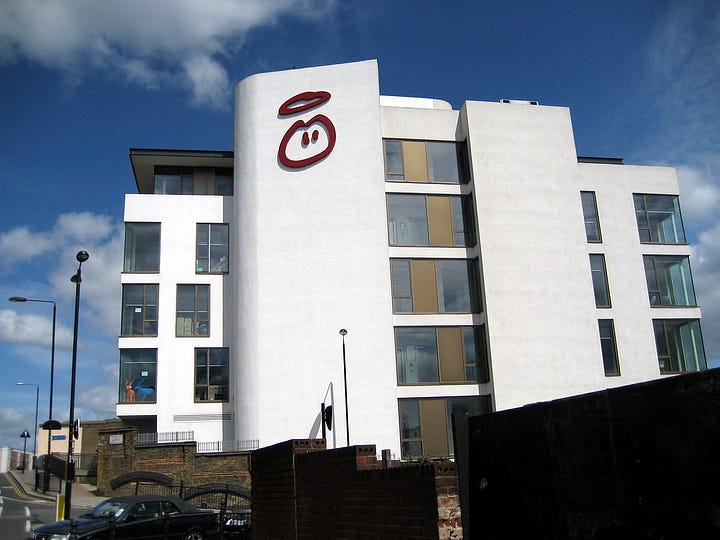
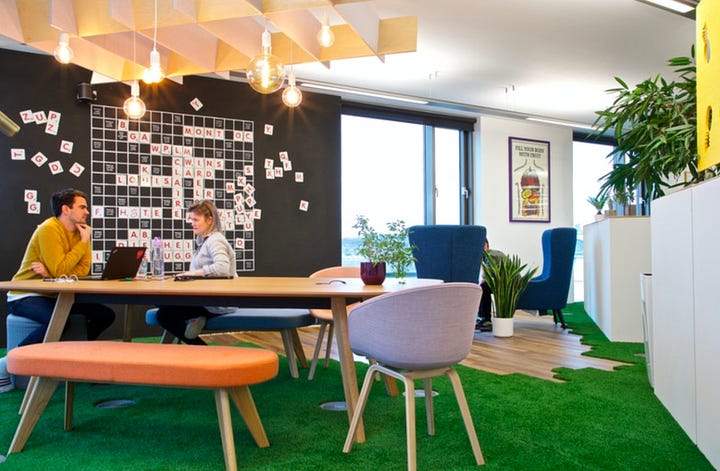
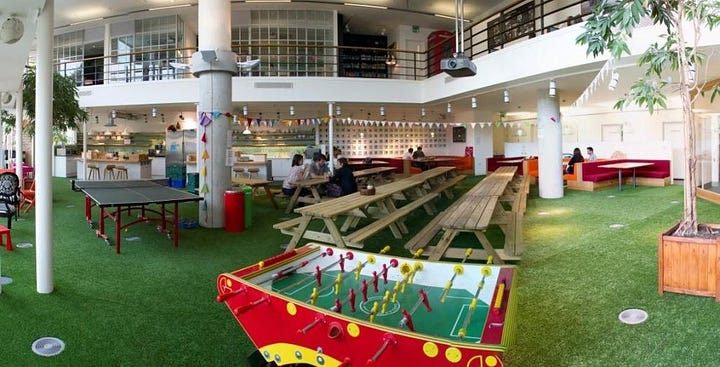
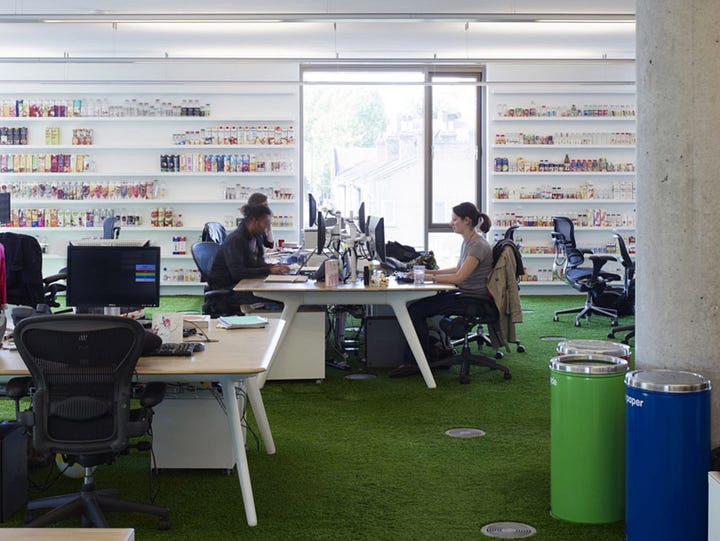
Sure, it’s a little kitsch. It also looks like the place hasn’t changed much since I walked past it thirteen years ago. But I still look at these photos and think it seems like a pleasant space to work from. It’s cheerful, bright, and fun.
I often think: why don’t more people prioritize fun in interior and exterior design?
A few hypotheses:
Other people enjoy fun-looking spaces much less than I do
It’s more expensive to make a place look fun so it’s not worth the extra cost
Fun designs are appealing at first but people who look at the same “fun” stuff daily eventually get tired of it and would overall prefer a plainer option
(1) is quite plausible. Not much more to say about this.
I think (2) is only sometimes true. You can certainly achieve cooler looks by spending money on custom items, but it’s also possible to be creative and construct a fun look at a low cost (e.g. the Fruit Towers example). At the other extreme, I recently learned about Epic Systems’ genuinely epic campus. Clearly they did spend a lot of extra money to make it so fun (though personally I think it was worth it). Their office campus is so cool that people visit it like a tourist destination—you can book self-guided tours on their website.
I can’t paste enough images into this blog post to fully convey how cool the Epic campus is—just look it up on Google images. It’s so whimsical, diverse, and imaginative.
But setting aside the highest standard of fun, which indeed will cost you, cheaper fun interiors exist. In general, companies with a strong consumer brand tend to do well at this.
In my second year of university, I accidentally applied to a marketing internship at Kraft Heinz. When you entered their office, one of the first things you saw was a person-sized tin of Heinz baked beans that was actually a ball pit with bean-colored balls inside. I couldn’t find any pictures online and didn’t capture any at the time, but here is an installation they did elsewhere that has a similar vibe:
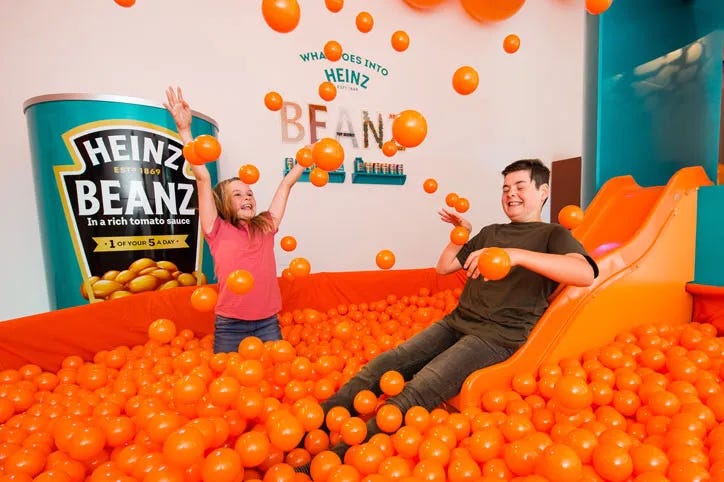
What about point (3): that people will quickly grow tired of “novelty” design elements? Again, I’m not sure what the general trend is here, but I suspect it depends a lot on the nature of the fun elements. In particular, you want to avoid succumbing to these pitfalls of fun design:
Sacrificing beauty for the sake of humor/novelty/surprise
Introducing impractical or non-ergonomic elements
Overly intrusive or distracting objects
I think one can achieve a whole lot without incurring any of those problems. For example, take a look at Epic Systems’ cafeteria, which is King’s Cross Themed.
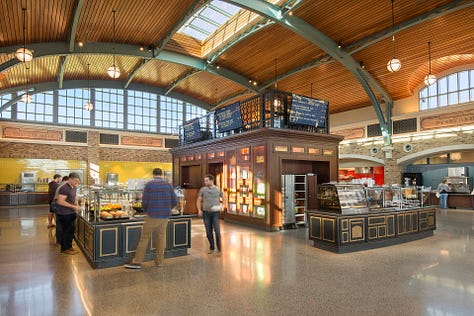
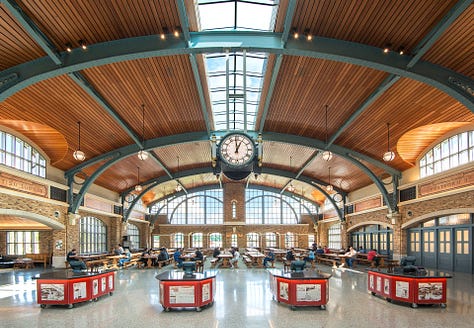
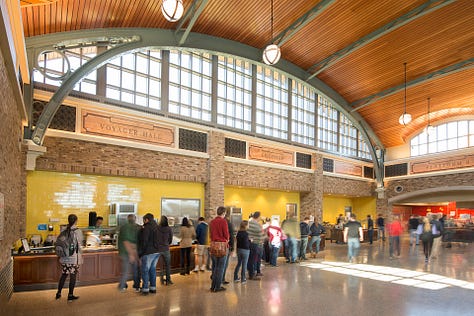
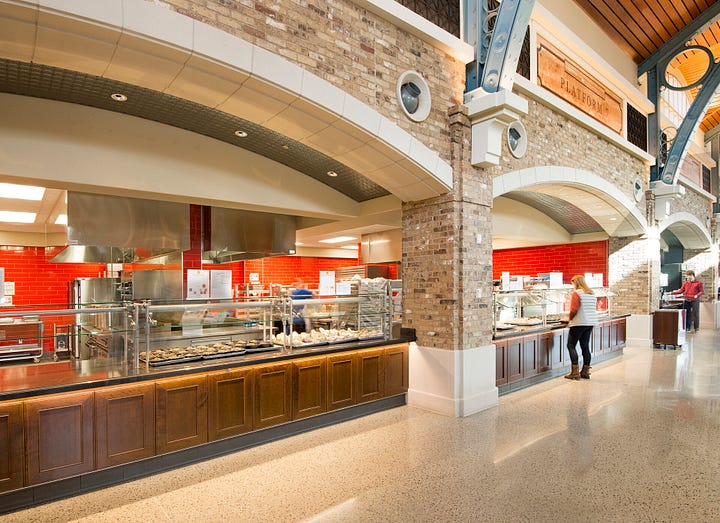
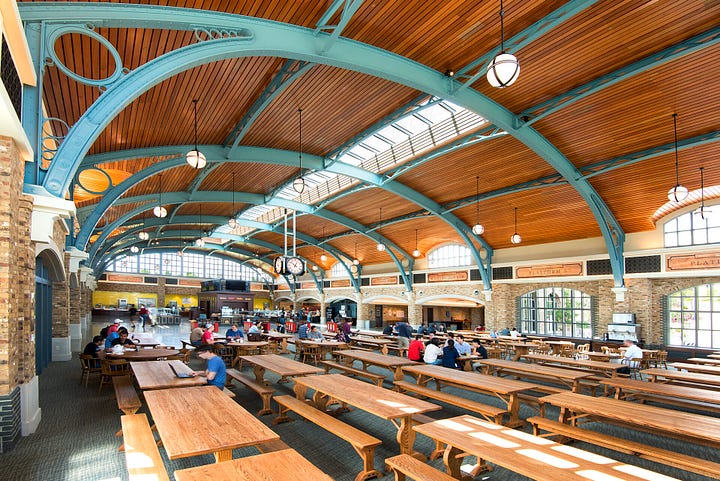
For reference, this is the interior of London King’s Cross and neighboring St Pancras Stations:
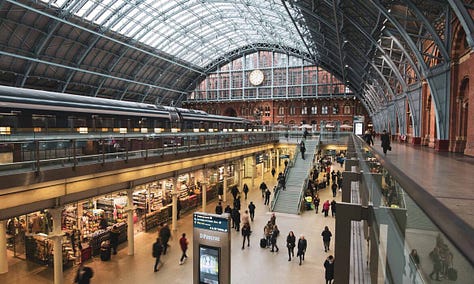
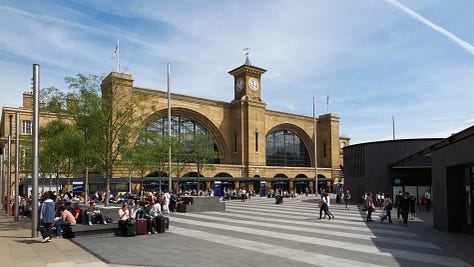
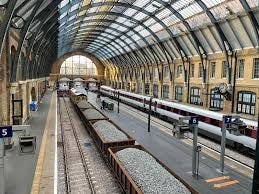
Even if you did not know of King’s Cross, even if you had never stepped inside a railway station for your entire life, the Epic cafeteria’s interior is still aesthetically pleasing. It does not seem garish or uncomfortable. But still it is fun and interesting. I think it’s possible to avoid designs that people easily tire of while still keeping things fun.
So far, I’ve only discussed office spaces. Office spaces are easier to play around with because they often have larger rooms and taller ceilings, giving you more space to use, especially in communal areas like canteens. But private homes can also be made fun!
Remember Fruit Towers with its artificial grass flooring? You can replicate a similar look with a green shaggy rug. Here’s one I found for $84.99 on Wayfair:
More adventurous are these moss-inspired rugs on Etsy (though I have no idea about their quality or ease of cleaning):
Fairy lights also add fun and whimsy in a low-cost and easy way to most rooms.
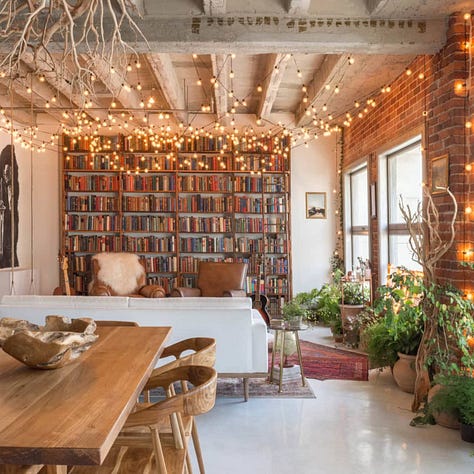
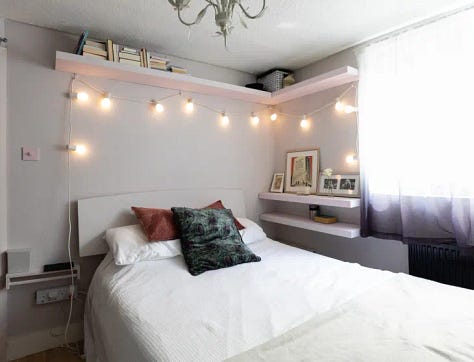
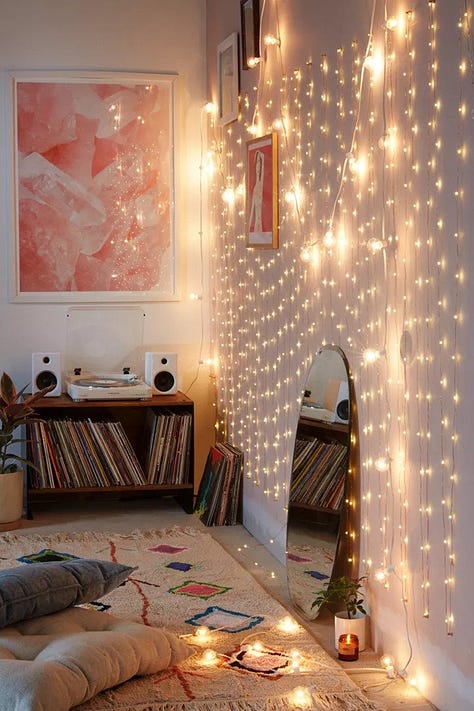
A higher-effort look could be modeling your kitchen space after a retro American diner: chrome elements, checkerboard tiles, booth-style seating:
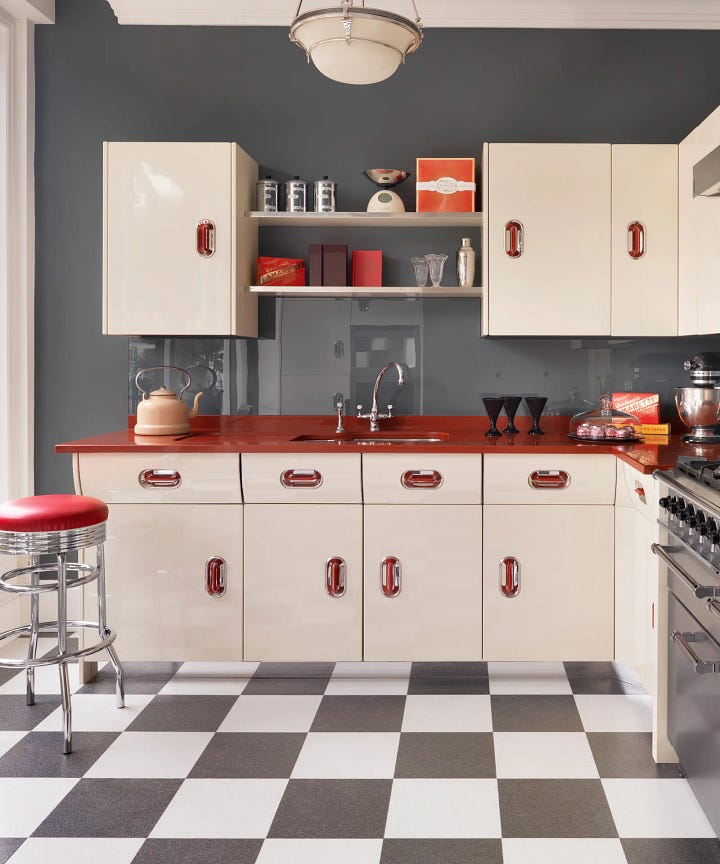
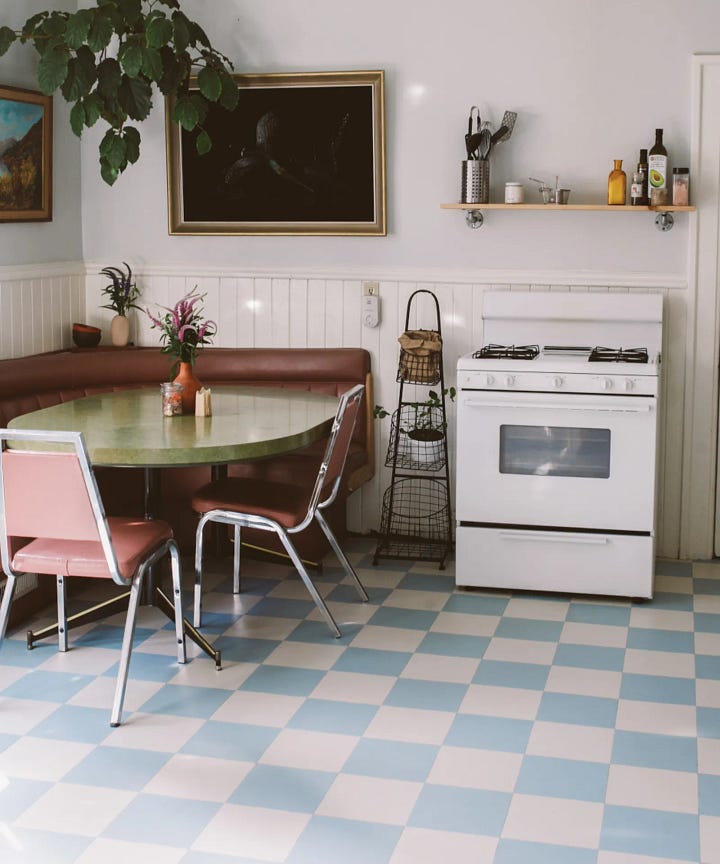
Another way to create a fun look is by picking a fun color scheme. A fun color scheme doesn’t have to be garish or make the space look like a kids’ playroom. The key is to introduce a tasteful amount of non-neutral tones. Typical interior design, be it traditional or old-fashioned, tends to emphasize colors like white, beige, brown, gray, and black. There are broadly three approaches to going beyond this boring color palette:
Pick a single accent color and sprinkle it throughout the space
Use a color palette of different colors that look nice together
Go for a neutral base accented with multicolor elements spanning the entire rainbow (either vibrant or pastel)
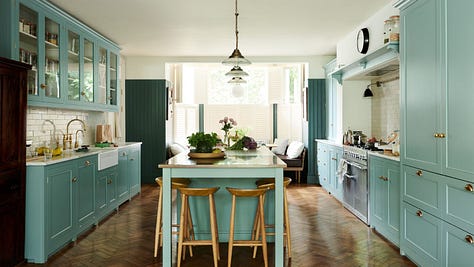
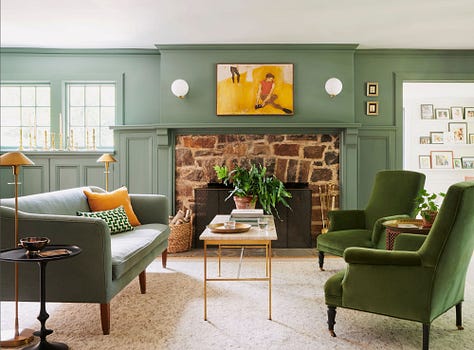
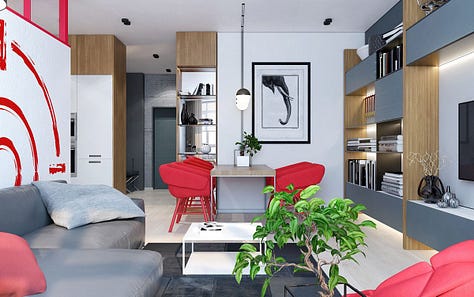
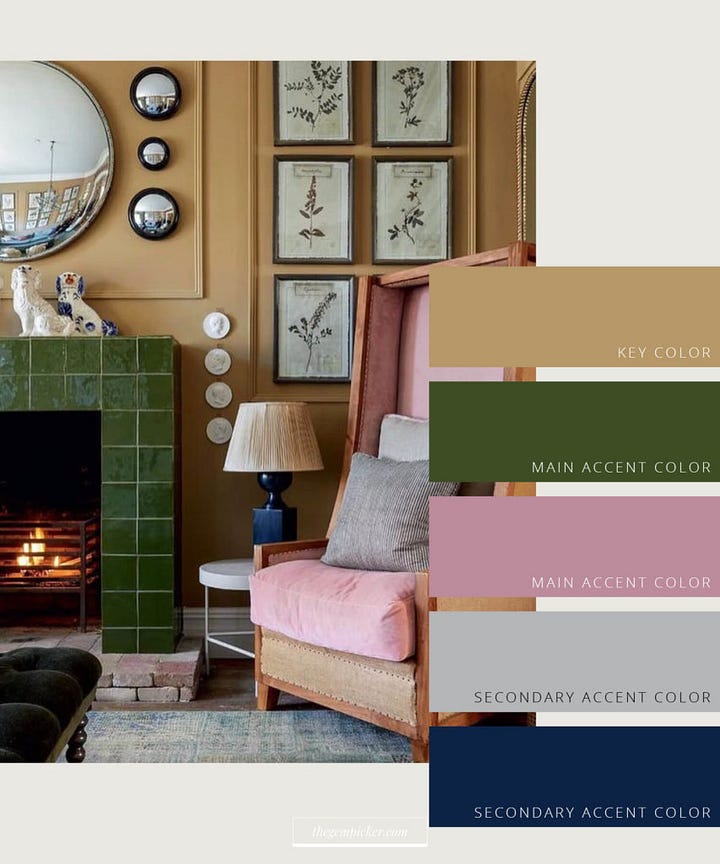
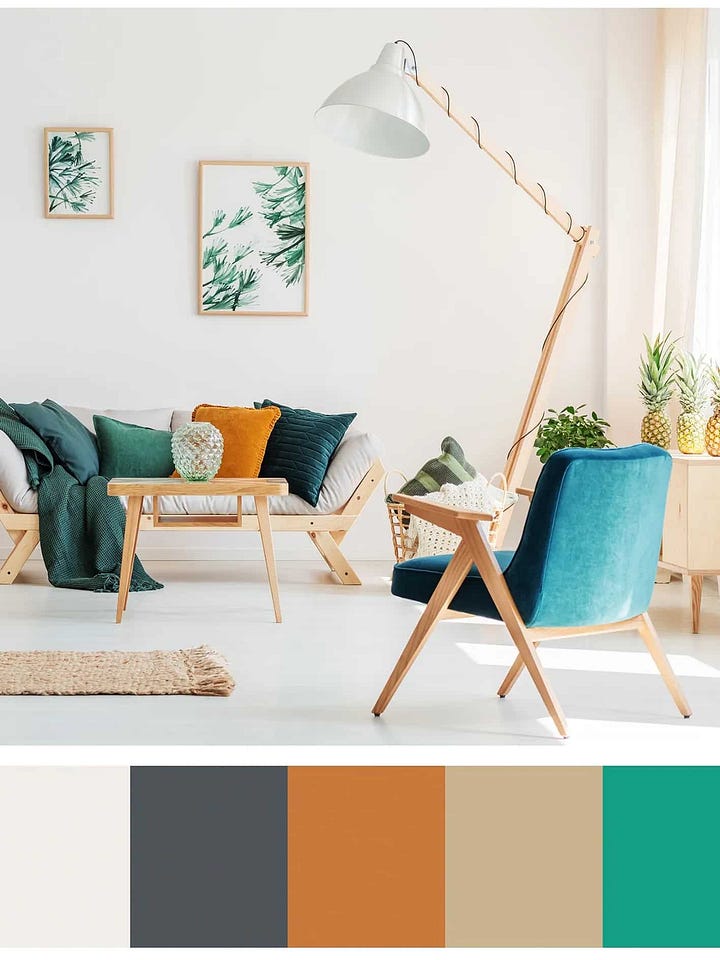
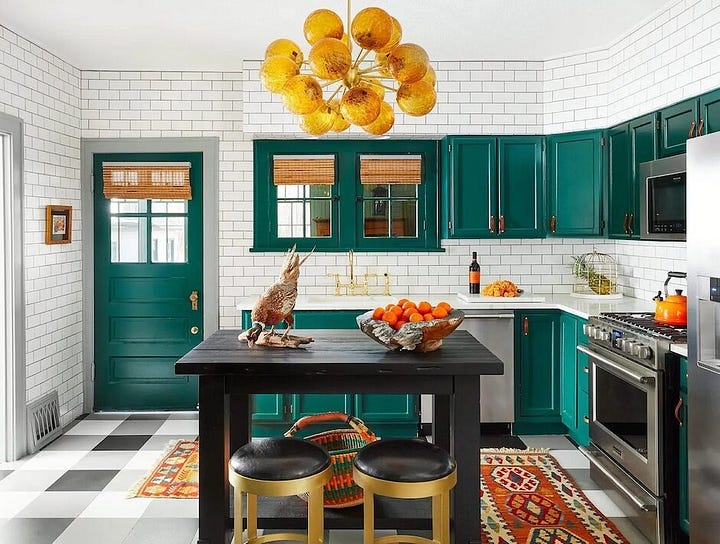
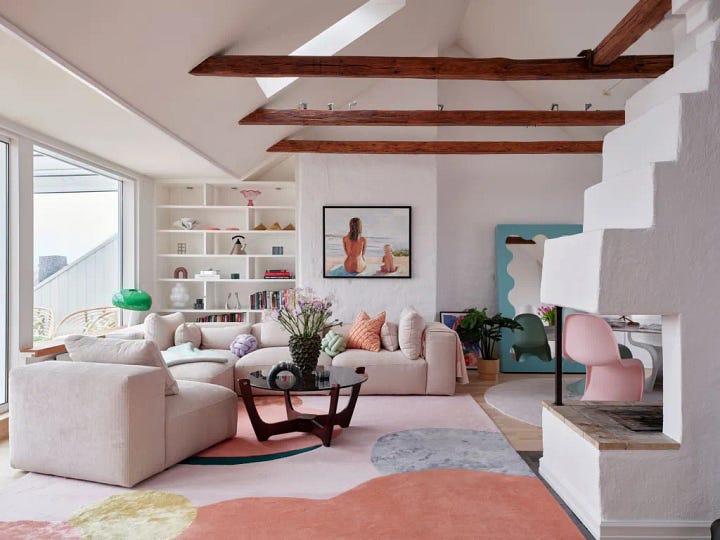
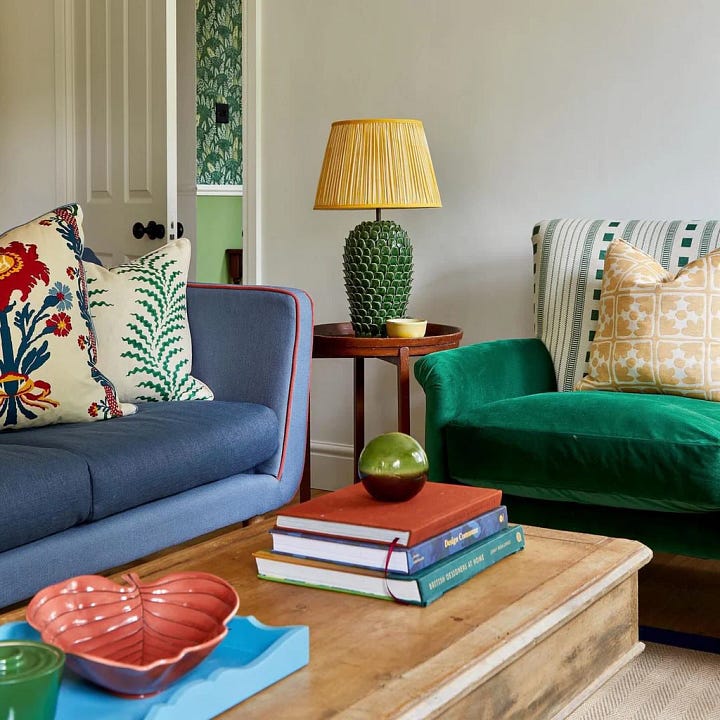
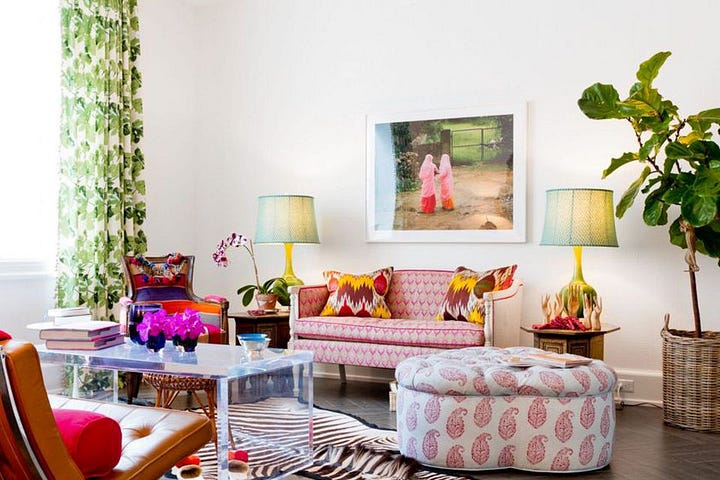
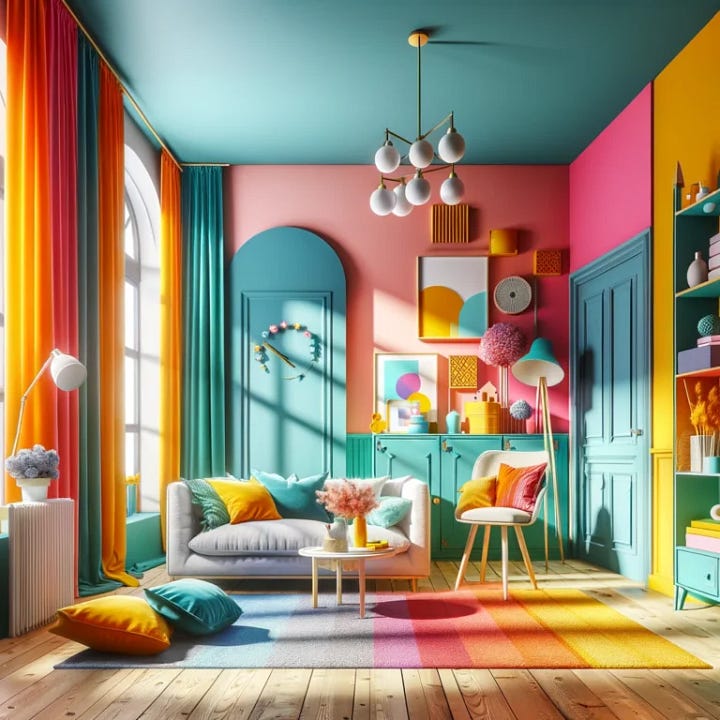
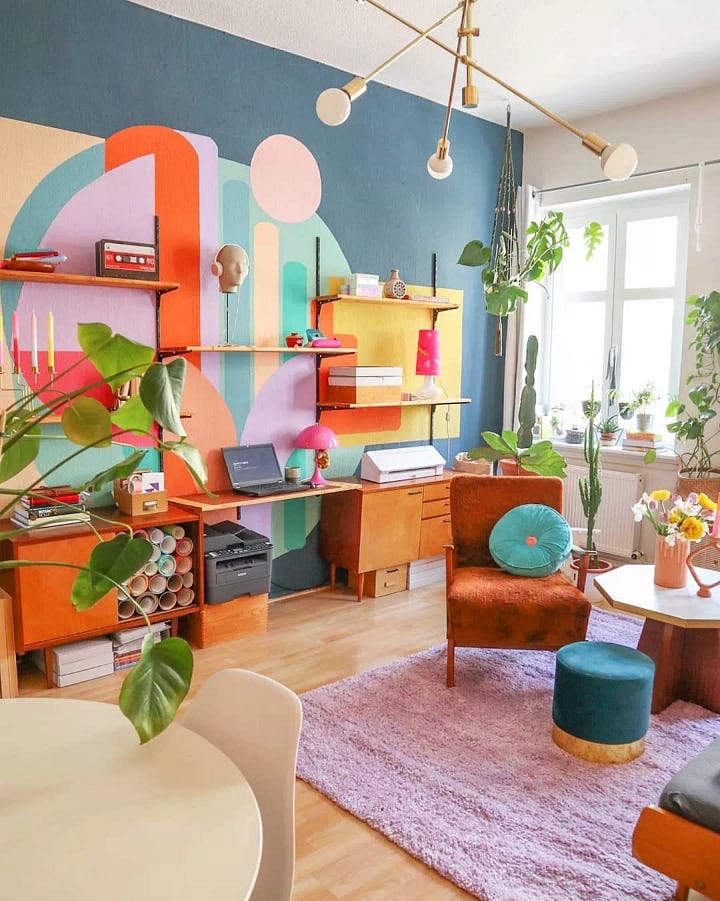
Starting from a neutral room, how do you add colorful elements? Here are some ideas, in ascending order of effort/expense:
Fabric! Pick colorful cushion/pillow covers, bedding, tablecloths, blankets.
Add a colorful rug.
Decorative items: colorful vases or tableware that’s on display, picture frames.
Artwork: find artwork you like that fits the color scheme.
Indoor plants or flowers, can even be fake if that fits with the overall style.
Pick colorful items of furniture: chairs, lampshades, sofas, and ottomans are a good place to start looking for color.
Paint: use an accent color on one of the walls, or paint cupboards/cabinets/shelves.
Of course many ways of making a room more fun are idiosyncratic to a particular theme, concept, or space. Part of the project involves being creative, thinking about the specifics of the space you’re dealing with, and keeping fun in mind whenever decorating/acquiring new furnishings. If you’re anything like me, it’s worth spending time and effort here because there is probably low-hanging fruit that you’re currently missing and with a little thought you’ll be able to sprinkle delight into the everyday.


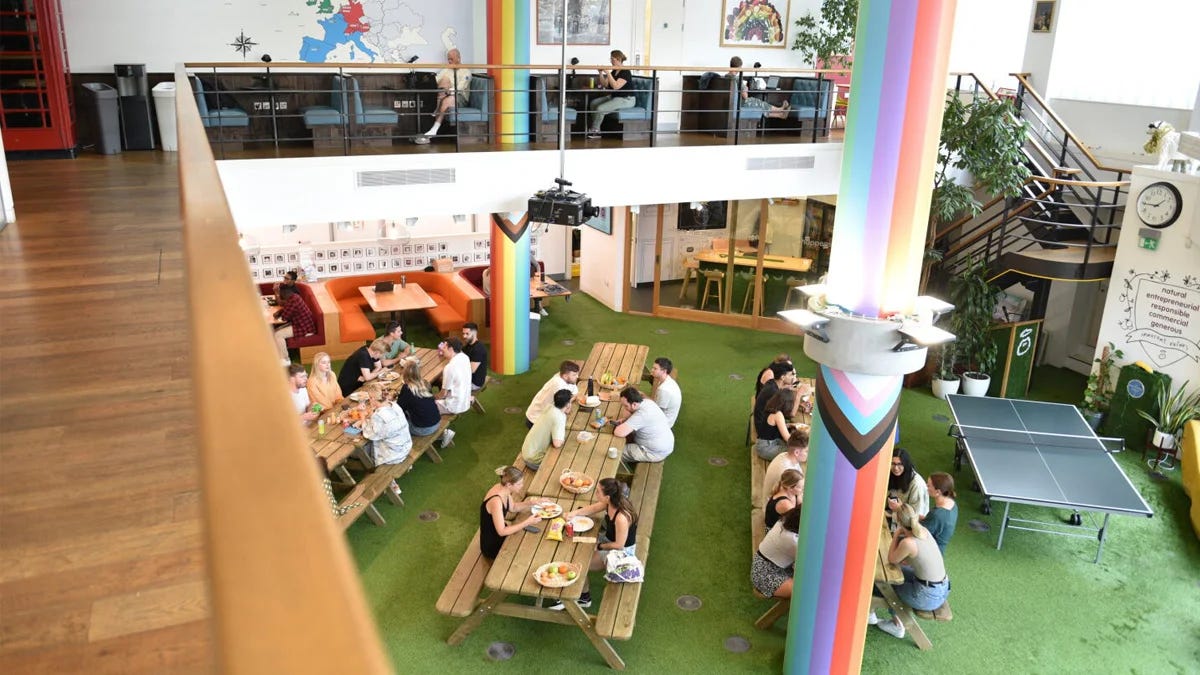
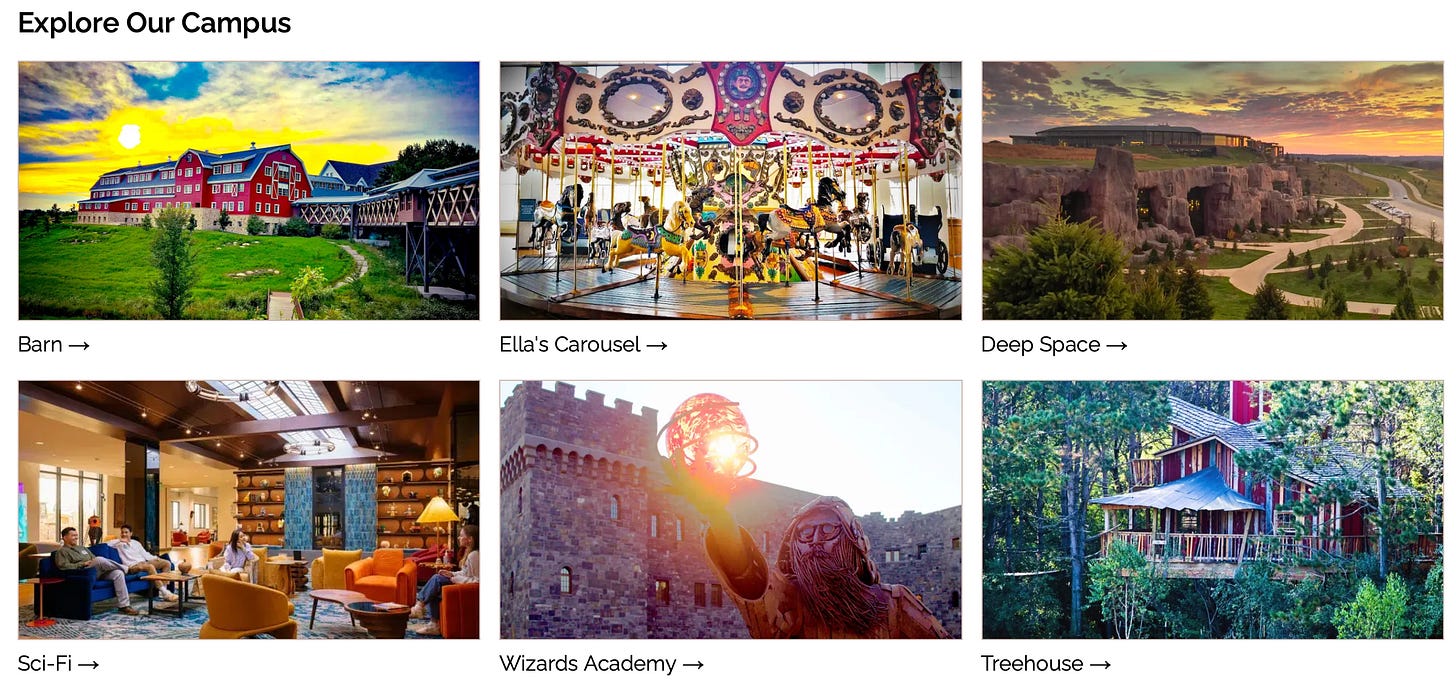
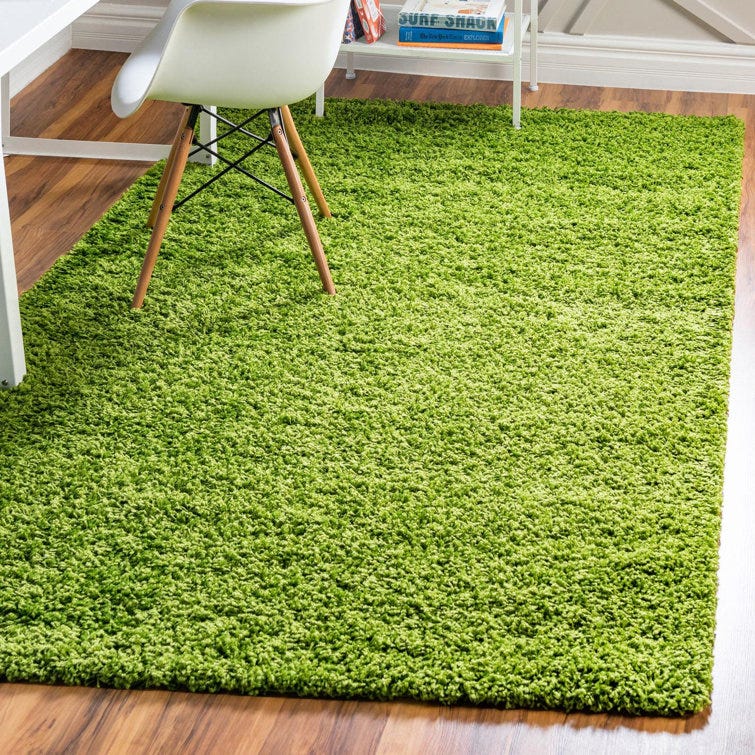

Nice post!
Hypothesis 4 (a variant of 1): It's hard to hit "fun" without hitting "kitsch", and people care more about not having their house described as kitsch than they care about fun.